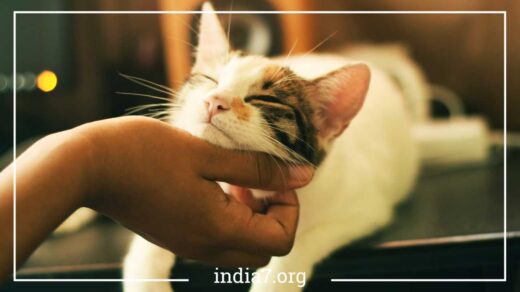Curing Bad Cat Breath: Causes, Prevention, and Dental Care

Bad Cat Breath
Cat owners know that bad cat breath can be quite unpleasant. It’s essential to understand the causes and effective solutions to address this issue and ensure your feline companion enjoys good oral health and fresh breath.
Understanding the Causes of Bad Cat Breath
Bad cat breath, also known as halitosis, can be attributed to several factors:
1. Bacterial Buildup:
The primary cause of bad breath in cats is bacterial buildup in the mouth. Bacteria naturally inhabit the oral cavity and can proliferate when conditions are favorable. When these bacteria break down proteins, they release sulfur compounds, leading to foul-smelling breath. The bacterium associated with bad breath in cats often thrives on tartar buildup on the teeth.
2. Tartar Buildup:
Tartar, a yellowish coating on the teeth, is a common contributor to bad cat breath. It consists of bacteria, food particles, and minerals that accumulate over time if not removed. Tartar provides a breeding ground for bacteria, exacerbating the odor.
3. Diet:
The food your cat consumes can influence their breath. Some cat foods may contain ingredients that contribute to bacterial growth and bad breath. Feeding your cat a healthy diet can help mitigate this issue.
4. Dental Issues:
Aside from tartar buildup, other dental issues such as gum disease, tooth decay, or abscesses can also lead to bad breath. These conditions can cause discomfort for your cat and warrant prompt attention.
5. Underlying Health Problems:
In rare cases, bad breath may indicate underlying health issues such as liver or kidney disease. It’s crucial to rule out these possibilities, especially if the bad breath persists despite addressing other factors.
Preventive Measures to Keep Your Cat’s Breath Fresh
Maintaining good oral hygiene is key to preventing bad cat breath and ensuring your cat’s overall health and well-being. Here are some preventive measures you can take:
1. Specialized Cat Foods:
Consider feeding your cat specialized cat foods formulated to reduce tartar buildup. These foods often contain enzymes that can help dissolve existing tartar and inhibit further accumulation.
2. Dental Treats:
Dental treats are designed to promote oral health in cats. They encourage chewing, which can help clean teeth and reduce tartar. Many dental treats are specifically created to combat bad breath.
3. Professional Dental Cleaning:
In cases of severe tartar buildup, consult your veterinarian for a professional dental cleaning. This procedure involves scaling and polishing your cat’s teeth to remove stubborn tartar. It’s typically done under anesthesia for safety and effectiveness.
4. At-Home Dental Care:
You can play an active role in your cat’s dental care by performing regular at-home dental care routines. Here’s how:
- Pet Toothpaste: Use toothpaste specifically designed for pets. Human toothpaste is not safe for cats. Pet toothpaste often comes in flavors that appeal to cats, making the process more pleasant.
- Mechanical Toothbrush: Invest in a mechanical toothbrush designed for cats. These brushes are gentle on your cat’s teeth and gums and have a toothbrush head optimized for feline mouths.
- Brushing Technique: Brushing your cat’s teeth should be a gentle and patient process. Start slowly, allowing your cat to become accustomed to the sensation. Focus on the outer surfaces of the teeth, where tartar tends to accumulate.
- Frequency: Aim to brush your cat’s teeth regularly, ideally a few times a week. Consistency is key to preventing tartar buildup.
- Enzyme-Containing Toothpaste: Consider using toothpaste that contains enzymes, as these can help dissolve tartar and combat bad breath effectively.
5. Dietary Considerations:
Pay attention to your cat’s diet as it plays a crucial role in their oral health. Here’s what you can do:
- High-Quality Cat Food: Opt for high-quality cat food that is nutritionally balanced and free from ingredients that can promote bacterial growth. Consult with your veterinarian for diet recommendations.
- Limited Bacterial Content: Check the labels of cat food for ingredients that may contribute to bacterial growth. High-quality foods are formulated to minimize bacterial proliferation.
- Consult with Your Vet: Discuss your cat’s dietary needs with your veterinarian to ensure you are providing the best nutrition for their overall health, including dental health.
6. Post-Meal Oral Care:
After your cat finishes eating, consider these steps to promote oral hygiene:
- Brushing or Rinsing: If brushing your cat’s teeth is not an option, you can rinse their mouth with water or an antiseptic oral rinse specially formulated for pets.
- Chewing Toys: Provide your cat with safe chewing toys or dental toys. Chewing can help dislodge food particles and stimulate saliva production, which has a cleansing effect on the mouth.
- Regular Checkups: Schedule regular checkups with your veterinarian to monitor your cat’s oral health. They can provide guidance on any necessary adjustments to your oral care routine.
Dental Care Products for Cats
When it comes to dental care products for cats, there are several options available:
1. Pet Toothbrushes:
Pet toothbrushes are designed for the unique needs of cats. They have softer bristles and a smaller head to make brushing easier. Some even come with finger sleeves, allowing for more precise control during brushing.
2. Pet Toothpaste:
Pet toothpaste is formulated to be safe for cats, as they tend to swallow it. It comes in a variety of flavors like poultry, seafood, or malt, making it more appealing to your cat. Avoid using human toothpaste, as it can be toxic to cats.
3. Dental Wipes:
Dental wipes are an alternative to toothbrushes, especially if your cat is resistant to brushing. These wipes are designed to be gentle on your cat’s gums and effectively remove plaque and debris.
4. Dental Sprays:
Dental sprays are a convenient way to maintain your cat’s oral hygiene. Simply spray the solution into your cat’s mouth to help reduce bacteria and freshen their breath.
5. Dental Gels:
Dental gels are similar to toothpaste but have a gel consistency. They often contain enzymes to combat tartar buildup and bacteria. You can apply these gels to your cat’s teeth with a finger brush or your fingertip.
Recognizing Dental Issues Beyond Bad Breath
While bad breath is a common indicator of dental problems in cats, there are other signs to watch for:
1. Gum Inflammation:
Inflamed, red, or bleeding gums can indicate gum disease (gingivitis). This condition can be painful for your cat and may require professional dental care.
2. Tooth Discoloration or Damage:
Inspect your cat’s teeth regularly for discoloration, fractures, or chips. These may indicate underlying dental issues that need attention.
3. Reluctance to Eat or Pawing at the Mouth:
If your cat shows signs of discomfort while eating, pawing at their mouth, or dropping food, it could be due to dental pain or oral issues.
4. Excessive Salivation:
Increased drooling or excessive salivation can be a sign of oral discomfort or pain.
5. Changes in Eating Habits:
A sudden change in your cat’s eating habits, such as eating less or only on one side of the mouth, could be indicative of dental problems.
6. Swelling of the Face:
Swelling on one side of your cat’s face can be a sign of an abscess or infection in the mouth.
7. Pawing at the Face:
If your cat frequently paws at its face or mouth, it may be trying to alleviate pain or discomfort.
If you observe any of these signs, consult your veterinarian promptly. Timely intervention can prevent further dental issues and improve your cat’s overall quality of life.
Addressing Underlying Health Problems
While most cases of bad cat breath are related to oral hygiene and can be resolved with proper care, it’s essential to be aware of potential underlying health problems. Liver or kidney disease, in particular, can manifest as bad breath. If you notice persistent bad breath that isn’t resolved by addressing dental issues, consult your veterinarian. They can perform diagnostic tests to rule out these more serious conditions and recommend appropriate treatment if necessary.
Conclusion
Curing bad cat breath involves a combination of preventive measures, diligent dental care, and dietary considerations. Regular oral hygiene routines, such as brushing your cat’s teeth, using dental treats, and providing a balanced diet, can help prevent tartar buildup and keep your cat’s breath fresh. Remember that professional veterinary care is essential for addressing severe dental issues and ruling out underlying health problems.
By following the advice and techniques outlined in this comprehensive guide, you can ensure your feline friend enjoys good oral health, fresh breath, and a higher quality of life.



